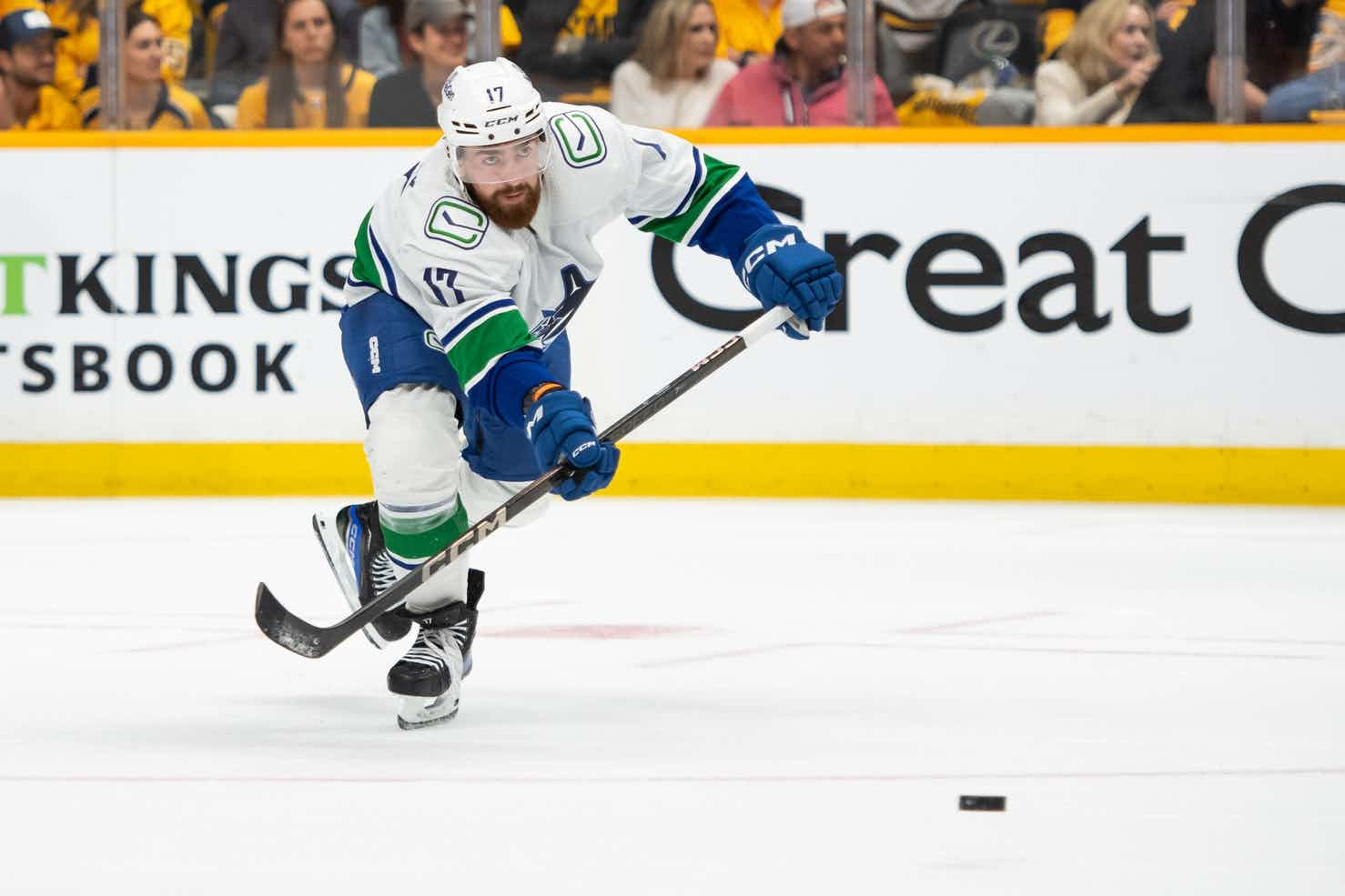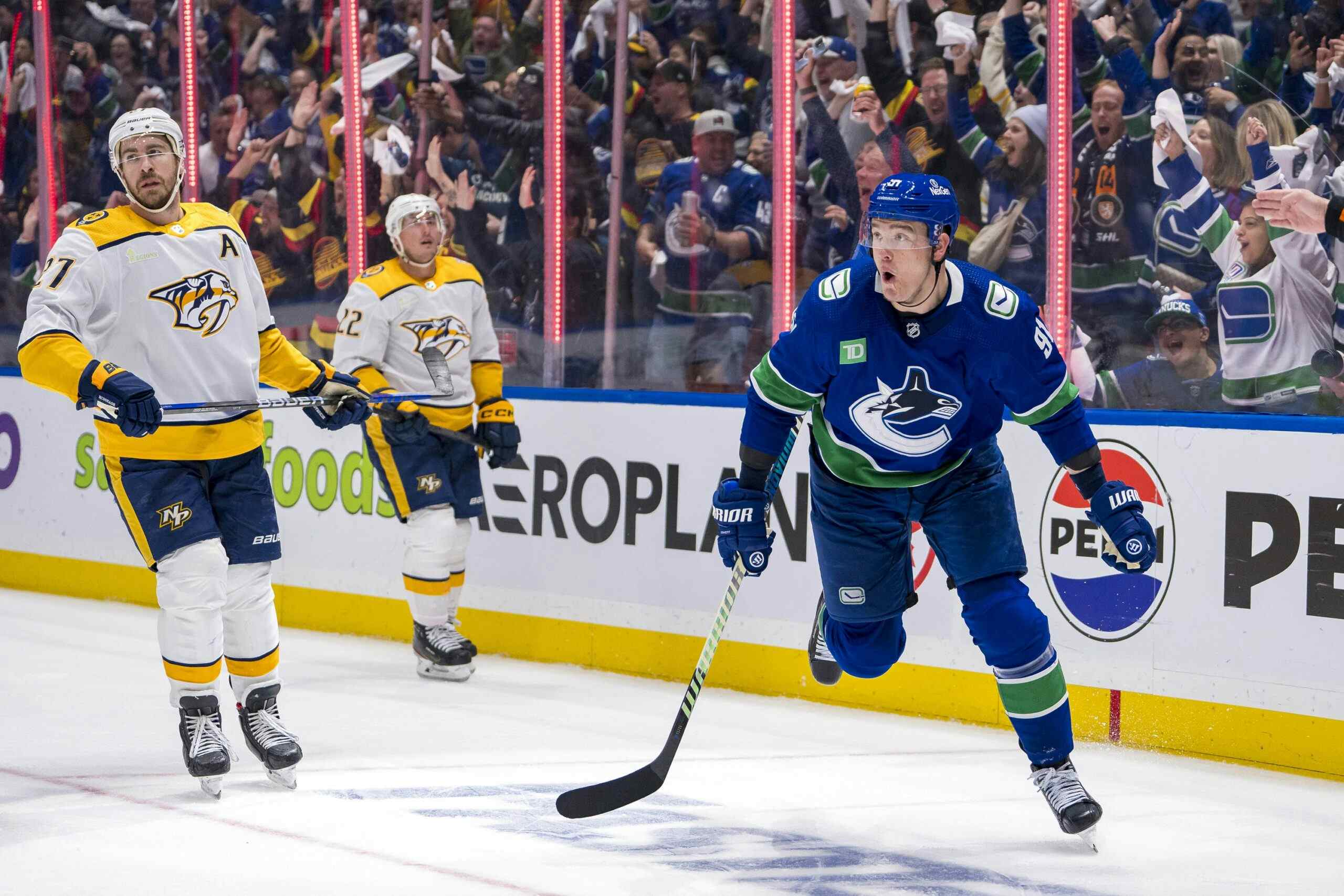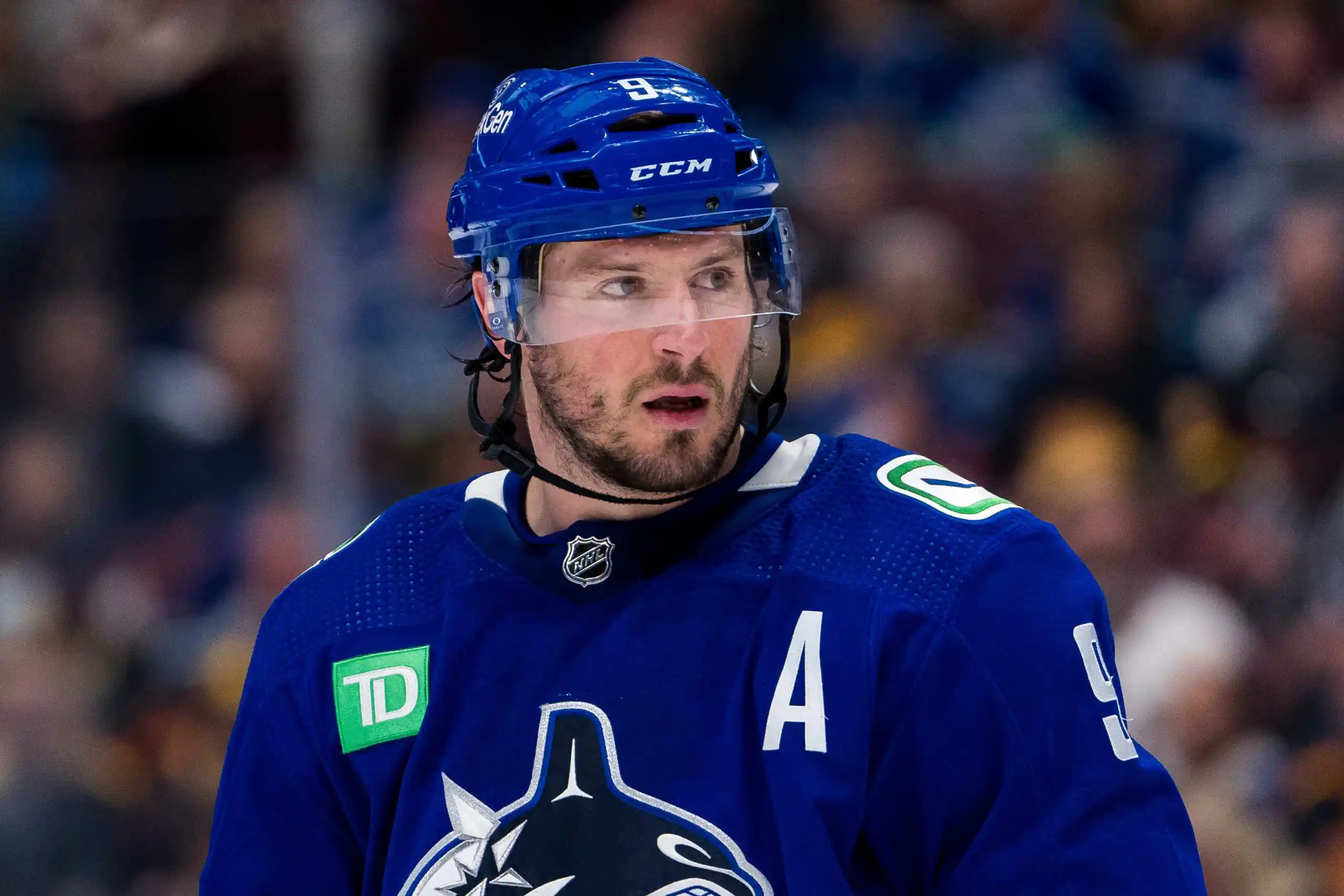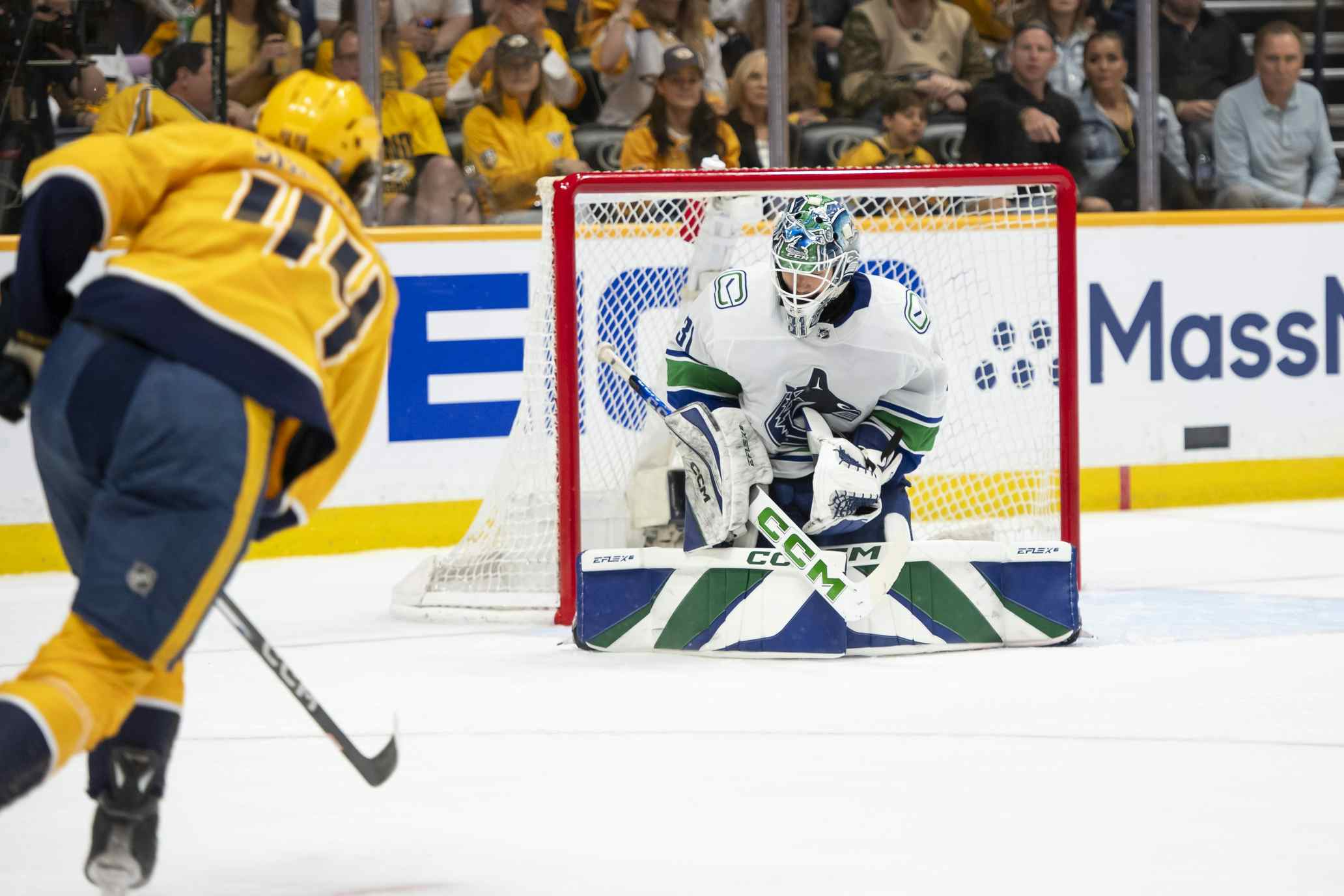Navigating The Salary Cap – Part 2
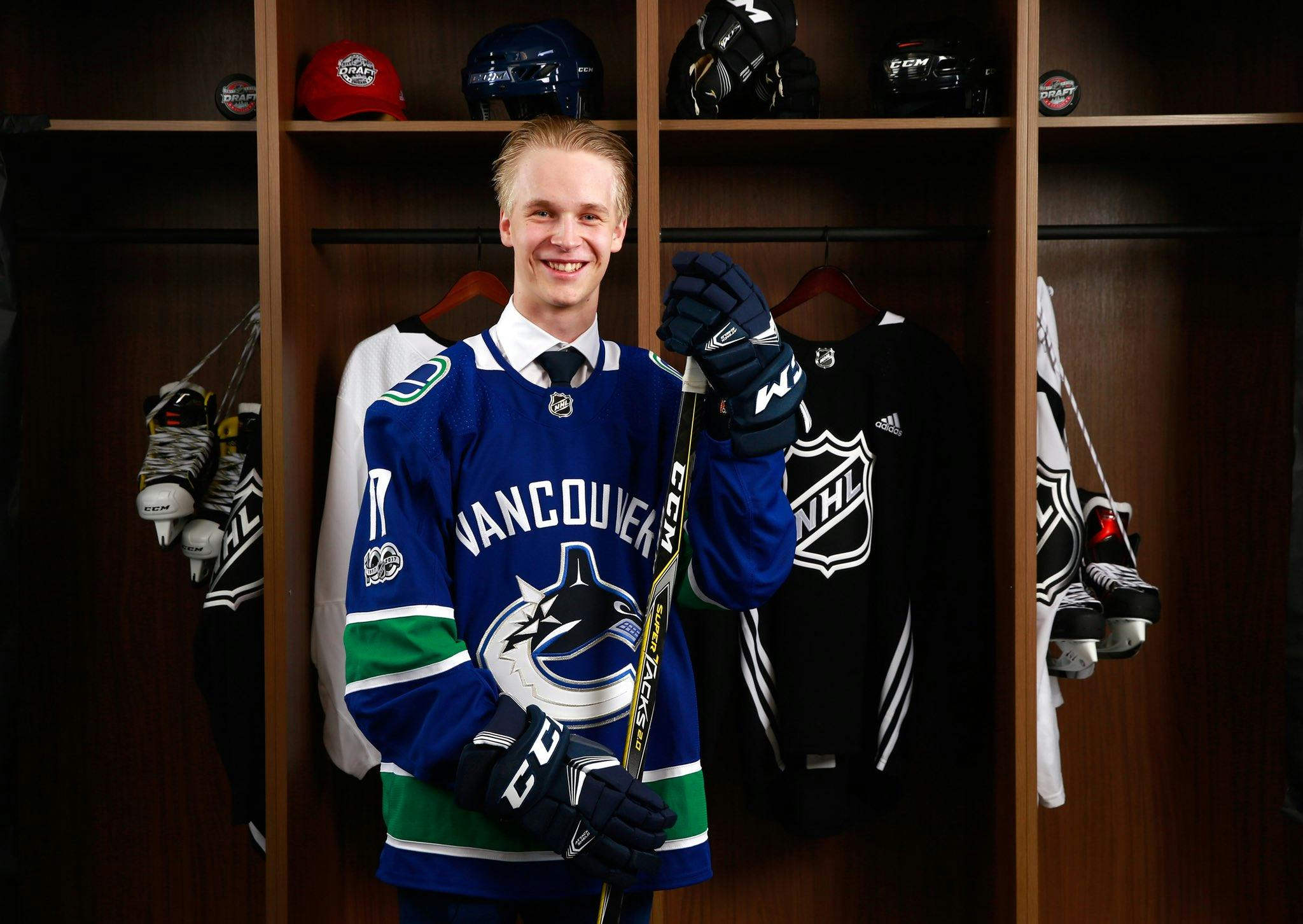
4 years ago
In my first article I showed that the Canucks are in a mostly okay salary cap situation this season that is manageable as long as a veteran player remains on injured reserve (likely), is traded (less likely), or if Brock Boeser signs for less than expected (somewhat likely) then they can squeeze everyone in. This article will attempt to project the Canucks salary cap situation for the next three seasons.
Any forecasting exercise should try to overestimate expenses and underestimate revenue. Therefore, salary cap increases will be minimal and player re-signings will be on the high side. Operating with this mindset allows a general manager to identify problems early on and help set targets for contract negotiations. It will also give flexibility when a player is signed below the targeted value. Not every player is going to live up to their contract so having flexibility is critical.
The assumptions for this exercise are that Benning will continue to hold on to veteran players for as long as possible and that no more veterans will be brought in without a similar cap hit going out.
Based on some of the great feedback in the comments I am going to reduce Boeser’s contract to 4 years, $7 million and Goldobin’s to 1 year, $1 million.
The following Canucks lineup is projected to start the 2019-20 season without any further trades. Loui Eriksson, Tim Schaller, and Adam Gaudette are in the minors.
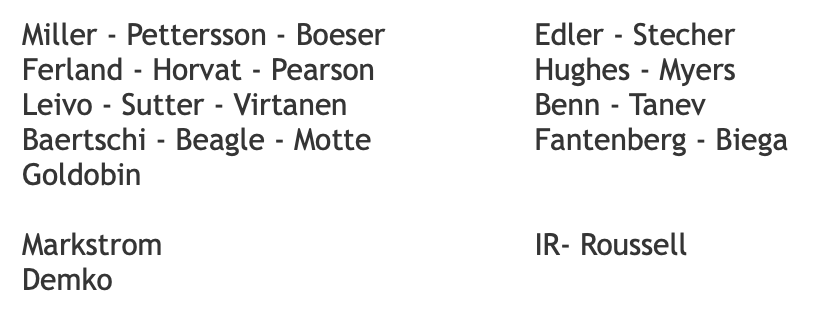 Antoine Roussell starts the season on injury reserve, and when he comes up Biega goes down. This leaves them with just $33,641 in cap space but it shows that Benning has the ability to squeeze Boeser and Goldobin in.
Antoine Roussell starts the season on injury reserve, and when he comes up Biega goes down. This leaves them with just $33,641 in cap space but it shows that Benning has the ability to squeeze Boeser and Goldobin in.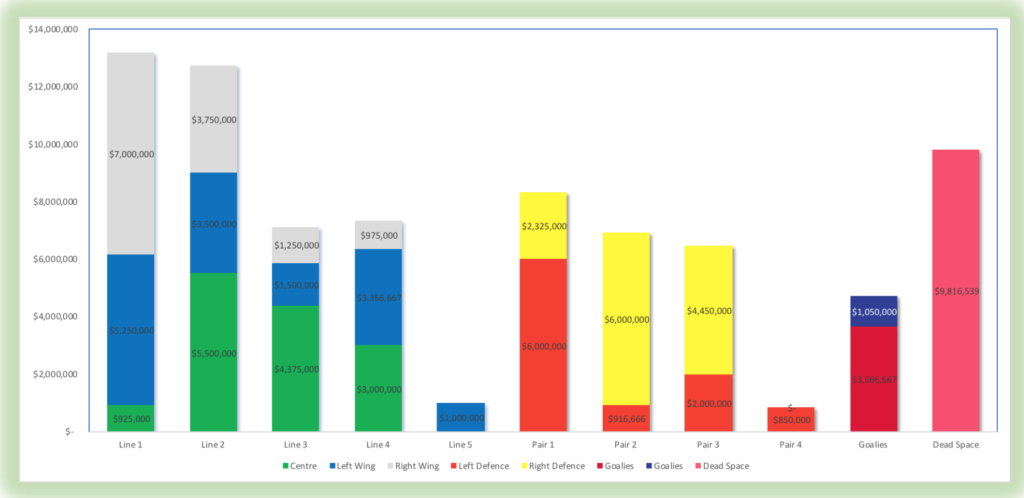
This lineup includes $9,816,539 in dead salary cap space due to burying contracts, buyouts, and unfair payback penalties. There is also the potential that any performance bonuses earned by Pettesson or Hughes will also carry over into 2020-21 if no further cap space is opened up.
2020-21
At the end of the season Schaller will be off the books along with Chris Tanev and it is hard to see either of these players coming back. Josh Leivo, Oscar Fantenberg, Alex Biega, and Jacob Markstrom will also be UFAs while Jake Virtanen, Tyler Motte, Nikolay Goldobin, Adam Gaudette, and Troy Stecher will be RFAs.
The salary cap has increased by around 2.5% over the past 5 years, with the exception in 2018 following the revenue boost from Vegas joining the league. Following this trend, the cap is forecasted to increase by $2 million to $83.5 million for the 2020-21 season.
The depth on the back end has been depleted with Tanev gone. Fantenberg is replaced by Olli Juolevi at $863,333 and Biega is gone as well. Jalen Chatfield is given a small raise and added to the roster at $825,0000. Tryamkin makes his triumphant return to Vancouver on a two-year $3 million contract and Stecher re-signs for three years at $3.5 million.
In the forward ranks Goldobin, Virtanen, Leivo, and Motte continue to grow their games. Leivo gets two years, $2 million, Goldobin gets two years at $2.5 million, and Virtanen get 3 years at $3 million. Motte gets a small raise to $1.25 million. Gaudette takes Sutter’s place on a one-year $1 million deal and Sutter goes to the minors for the final year of his contract. Sven Baertschi either proves that he can still play in the NHL and is traded or he retires due to concussion issues. Roussell also returns from injury meaning that the Canucks will carry 13 forwards and 8 defencemen.
Markstrom has another strong season and earns a three-year deal worth $5 million per.
The 2020-21 projected lineup is below…
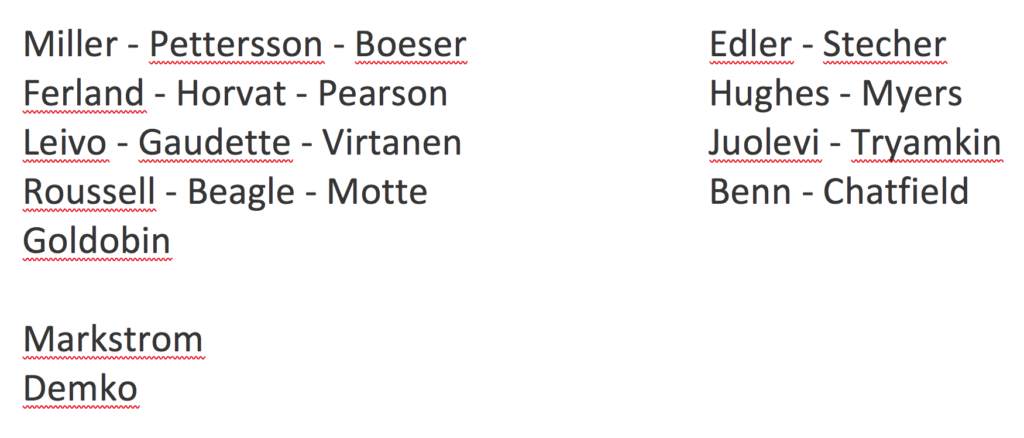
This plan puts the Canucks payroll at $83.1 million leaving them with just $378,462 in salary cap space. It does work but it depends on trading Baertschi who continues to appear out of place in the lineup. It does not account for bonuses carrying over from the previous year. Trading Sutter could open up further space but if he does not regain his health he won’t have any value.

They are now up $12.291 million in dead salary cap space with Eriksson and Sutter in the minors to go with the Ryan Spooner buyout and the Roberto Luongo cap recapture penalty. This does not seem like a recipe for success for a team that expects to be in the playoffs at this point and is not the best use of the cap advantage gained from the final years of Quinn Hughes and Elias Pettersson’s entry-level deals.
2021-22
Heading into the summer of 2021 Hughes and Pettersson will be due for massive raises if what we have seen so far is any indication. There could also be further entry-level bonuses carried over from both these players. Pettersson continues to shine as one of the top young offensive players in the league and commands a staggering $10.5 million for 5 years. Hughes signs a five-year deal worth $7.5 million which will take him to unrestricted free agency at the age of 26.
The salary cap continues to increase only modestly, rising another $2 million to $85.5 million.
Tanner Pearson leaves in free agency, replaced by Kole Lind and Nils Höglander takes Baertschi’s spot. Leivo gets taken in the expansion draft by Seattle and is replaced by Vasily Podkolzin.
Gaudette re-signs for $2.5 million and Goldobin gets $3 million. At this point these are just wild guesses given how much uncertainty remains in these player’s potential outcomes.
On the back-end Elder is gone, replaced full-time by Juolevi on a one-year $1,200,000 deal. Woo joins the team to take Edler’s roster spot. Chatfield re-signs for $850,000.
Demko re-signs for 2 years at $3 million dollars.
The club continues to carry $7.9 million or 9.2% of the salary cap in dead space for Luongo and Eriksson for a final season.

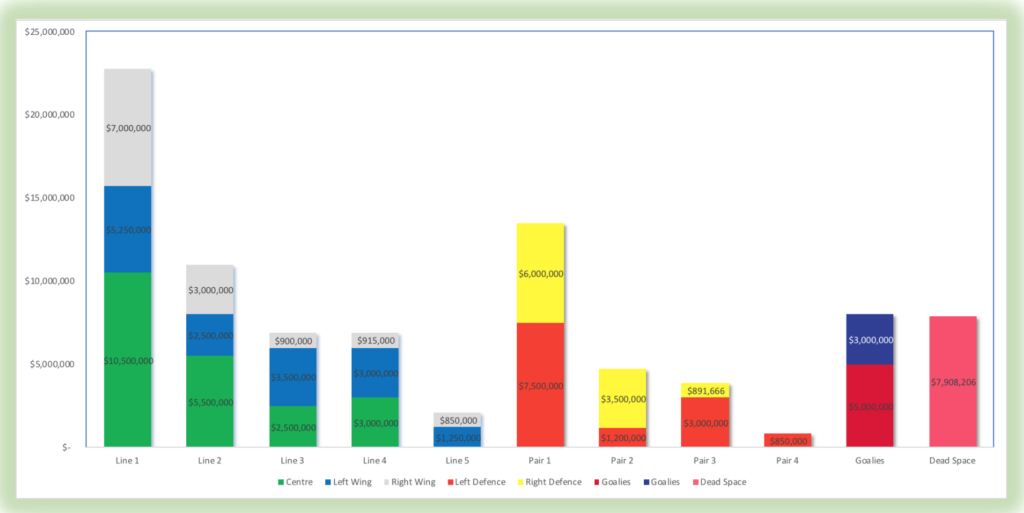
There is less balance in salary distributions with the huge deals given to Pettersson, Hughes, and Boeser. The lineup has four players on entry-level deals. The projected salary cap hit is $90.0 million, $3.0 million over the forecasted limit. There are many ways that the $3.0 million could be saved, but none of them are easy options.
Potential Options
Buyouts come out as net-losses against the salary cap, but spread the pain out over two seasons. They are almost like taking out a bad loan. Buying out the final year of Loui Eriksson’s deal will reduce his salary cap hit by $875,000 compared to what it would be in the AHL but adds on $1 million in dead cap space to the 2022-23 season. Buying out Roussell or Beagle would only save $1.27 million and add on $633,333 in 2022-23 and they would need to be replaced by someone making at least $750,000.
Taking a harder line in contract negotiations could yield additional savings. Estimates for Virtanen, Goldobin, Gaudette, and Leivo are just optimistic guesses because there is still so much uncertainty in how they will turn out. But salaries for elite young talent continue to escalate and the estimates used in this exercise could end up being low for some players.
If a young player outperforms expectations and commands a bigger contract then this might be an opportunity to sell high on someone else in the lineup. Then elevate the younger player into a more prominent role that fits with their increased salary, and replace them with a cheaper player who fits the targeted salary range for the vacant role. Building a forecast like this could help a GM identify these opportunities early on and allow for a more proactive approach. For example, Baertschi has been identified as a trade target in this exercise.
JT Miller, Micheal Ferland, or Tyler Myers could be exposed in the expansion draft with the hopes that Seattle will take one of them, but relying on other teams to solve your cap problems is never a sound strategy. One of them could also be traded but younger and cheaper talent would need to be available to replace them. Given the amount of dead salary cap space that is projected for the next three seasons it is critical that these three players work out and don’t end up as further millstone’s around the GM’s neck.
A cheaper option could be found in goal by letting Markstrom walk but Demko’s ability to take over as the starter is highly uncertain at this point. Hopefully Demko has a fully healthy season and we learn more about his abilities.
Whichever path Benning (or his successor) chooses to follow, it will not be a clear one. At the start of the 2021-22 season Horvat will be 26, Boeser 24, and Pettersson 22. This is the time that the Canucks should be entering the conversation for serious contenders but they will still be weighed down by the legacy of contracts signed as far back as 11 years ago.
Things appear better for 2022-23 assuming that their remaining deals work out. They have the potential to be free and clear of any dead cap space. There could also be a larger salary cap increase to start that season with the addition of Seattle’s revenues and a new TV deal in the US. Horvat, Miller, and Ferland will be on the final years of their current deals. In the summer of 2022 the Canucks core will be in their prime. They could have around $15-20 million to sign four or five players if the cap jumps up to something around $90 million, but can they get there without wasting that money on players no longer contributing to the team?
This forecast leaves little flexibility, relies on veterans being traded away, and does not account for entry-level bonuses. It looks like things can work without paying someone to take a bad contract or making another big move, but the biggest fear has to be that they continue in a cycle with 10% of their cap space eaten up by bad contracts each year while they overpay for yet another free agent to replace the guy that was just sent to the AHL or bought out. They will never compete for the Cup by wasting resources in this manner.

